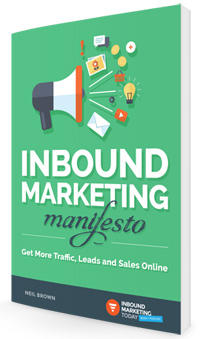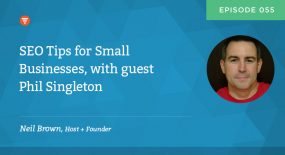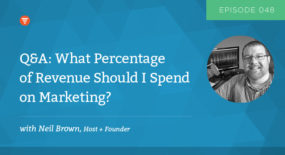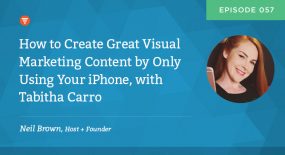As a web design and inbound marketing agency, we’ve worked with clients on countless websites over the years. Through our experience, we’ve identified some myths and misconceptions about website design that we’d (hopefully) like to put to rest, once and for all!
Here are 14 common misconceptions about website design:
1. If you build it, they will come
“Okay we have this shiny new website — now visitors will beat a path to our door!” is the mentality many businesses have when launching a website. Clients often see the launch of the website as the endgame, but in reality, it’s just the beginning. We believe your website serves as the hub of your marketing, but it does little good if no one visits your website. Your website should be optimized and easy to find in Google (and should be supported by social media channels).
2. The “fold” / user’s don’t scroll down
We come across this misconception often, so let’s dispel this one quickly. Users WILL scroll down to view your content. There is some debate as to whether “the fold” is relevant in web design. We think that the most important information, including calls-to-action, should go near the top of the website, i.e. “above the fold,” when possible. However that doesn’t mean that visitors won’t scroll down nor that the rest of the content will go unnoticed. If your content is quality, people will scroll down to read it.
3. It’s so easy, anyone can do it
“My nephew could design our website — he’s pretty good on computers, you know!” We’re sure Little Jimmy is a great kid, but should you really count on your nephew to create a website to be the primary face of your business online? There is more to a website than a nice color scheme and some pretty pictures. Content and SEO are essential to designing a successful website.
4. It should look the same in all browsers
Oh, how we wish this was simple task (here’s looking at you, Internet Explorer!). Unfortunately, each Internet browser renders code in a slightly different way. This doesn’t even take into account the fact that web designers have to code for each version of a particular browser. Web designers have to code in a way that is compatible with most modern browsers and then implement specific fixes for certain elements, so they may not be able to make your website look exactly the same on every single browser.
5. It should be an online brochure
Your website should be an interactive, two-way conversation with your visitors, not simply an online brochure about your company. With features such as blogs, social media widgets, calls-to-action and landing pages, you can engage with and grow your customer base
6. Make the logo bigger!
This misconception is the bane of designers everywhere. Yes, your logo is important but it shouldn’t be the dominant element on your website. You don’t want your website to scream self-promotional to a fault, that’s a huge turnoff for customers. If you can see your logo from across the room, it’s probably too big…
7. Fill up this empty space
Websites should incorporate some visual “breaks” between elements. Don’t cram the design with so much that your website looks busy. You’ll leave your visitors feeling overwhelmed and they very well may leave your site because of it.
8. We want a cool Flash intro
Yes, Flash can be used to create some really awesome animations. But Apple effectively killed Flash for website design when they decided not to support it on iPhone and iPads. Search engines also don’t crawl and index Flash content very well which can hurt your rankings.
9. Everything should be bold / stand out
There needs to be some visual hierarchy in your design. Determine which parts of your design are most important and make those stand out—key services, calls-to-action, you get the point. If everything is bold, then nothing stands out!
10. Everyone will look for my contact info on the contact page
Visitors should easily be able to find your contact information — phone number, email address and/or physical address at all times. Don’t make users go on a hunt just to find this! We generally place basic contact details at the top and bottom (header and footer for you web nerds) of every page.
11. Our new site should last for 10 years, right?
The Internet and technology is changing at rapid speed. Design trends change quickly as well. We generally recommend considering a redesign every 2-3 years to keep your website fresh and relevant. Nobody wants to look at a website that looks like it was designed in 1999.
12. We should use generic stock images
Nothing screams bland and faceless like a generic stock photo of a man or woman looking cheesy and hawking everything from insurance to pre-paid legal services. You can spot them a mile away! When possible, use actual photos that you or a photographer has taken to bring more character to your brand. Now, we’re not saying all stock photos are bad — just be very selective and use ones that aren’t so generic.
13. Let’s copy our competition’s text
No one likes a copycat. Create original content that speaks to your target audience, not someone else’s. After all, isn’t your business unique? Highlight that in your content and your customers will appreciate it.
14. Let’s grab an image off Google
Stop right there. This one is a big no-no. There are copyright laws about photos and doing a Google images search is one way to land yourself in a load of trouble. The last thing you want is to have to pay a huge fine for using a copyrighted photo instead of buying it for 10 bucks like you should have in the first place.
We hope you’ve enjoyed our common misconceptions in web design. If you feel we’ve left some out, please comment below!







Leave a Comment